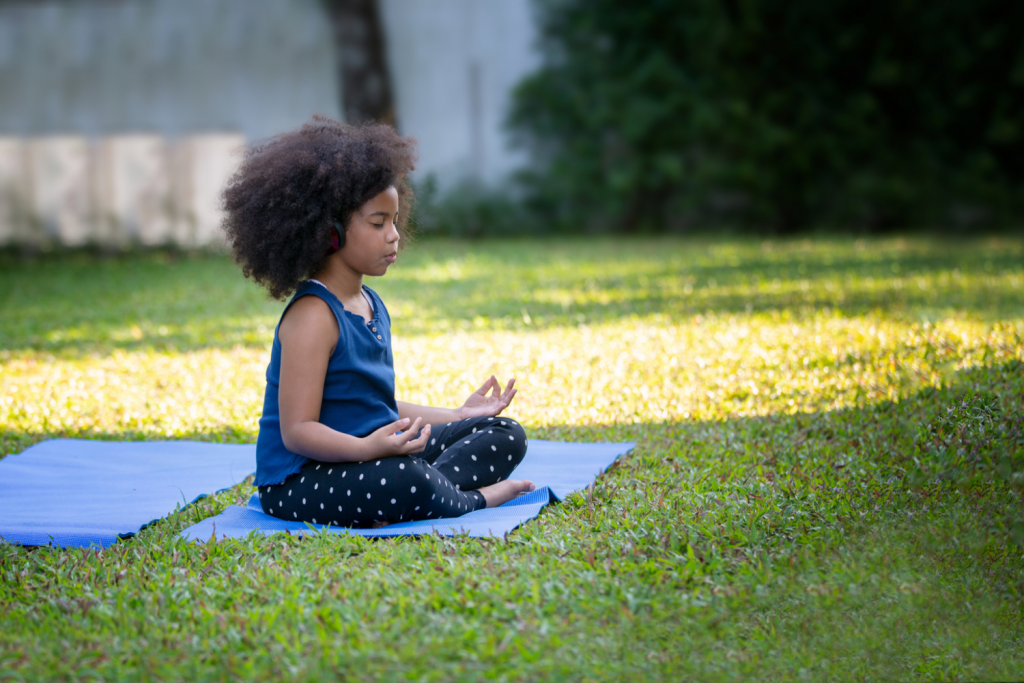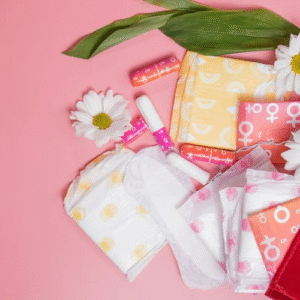Are you a parent worried about your child’s anxiety? Are you looking for ways to help them manage their stress more effectively? If so, this post is for you! We’ll provide practical tips and techniques that can help children of all ages manage their anxiety and cope with difficult emotions.
Please note that I am not a medical professional and just sharing techniques and ideas that have worked for us. Always consult with a medical or mental health professional if you feel it is needed.
DIsclaimer
Table of Contents
Understanding Anxiety in Children
Anxiety in children can be a difficult thing to manage. It is important to understand what anxiety is and how it affects children. Anxiety is a normal emotion which can be triggered by a variety of factors, both internal and external. It can manifest itself in physical, emotional, or behavioral symptoms, and it is important to recognize these signs in order to help your child better manage their anxiety.
By talking openly and honestly about anxiety, teaching kids how to respond to it, and providing them with strategies for managing it, parents can provide their children with the skills they need to better cope with anxiety. It is very important in my experience that the child knows that it is okay, and they are not the only ones who feel this way.
Teaching Kids to Respond to Anxiety
In order to teach kids how to respond to anxiety, it is important to identify triggers, validate their fears, and create strong bonds with them. Parents should also help children and adolescents to have positive self-talk and help them become like detectives who can assess the evidence behind their anxious thoughts. Additionally, it is important to teach healthy coping strategies, such as deep breathing and muscle relaxation techniques, that will help them manage the effects of stress.
Finally, parents should provide a supportive environment where they can talk openly about anxiety and read books or watch videos that help normalize the experience. It’s also important to ask them what it feels like in their mind and body, and what things make them feel that way. By understanding the triggers for their anxiety, parents can help their children identify strategies for managing it.
Slowing Down to Manage Anxiety in Children
Our world is so fast paced, it seems hard to slow down at times. Our kids feel that pressure to keep up. Slowing down to manage anxiety is an important step for children. Taking the time to recognize feelings of anxiety, identify the source of the anxiety, and create strategies to cope with it can help kids feel more in control of their emotions.
Start by teaching your child how to slow down and recognize their own feelings of anxiety. Tell them that it is okay to take a few moments to pause and focus on their breathing. Encourage them to practice deep breathing and relaxation techniques such as yoga and progressive muscle relaxation. This can help the child feel more centered and in control of their emotions.

Practicing Deep Breathing and Muscle Relaxation
To help kids manage their anxiety, it’s important to provide them with strategies to regulate their emotions. Practicing deep breathing and muscle relaxation can be a great way to do this. Deep breathing is a simple yet effective way of calming the body and reducing stress. It can also help to reduce physical tension in the body, which can help reduce feelings of anxiety. Teaching kids how to slow down and practice deep breathing can be an invaluable tool in helping them manage their anxiety. Additionally, practicing muscle relaxation techniques can help children to relax and release physical tension in their body.
5, 4, 3, 2, 1 technique
When your child is having a hard time with their anxiety in the moment this technique can help them distract from it so they can think about it more logically. Practicing this while your child is not extremely anxious is important so they know what to do when the time comes.
Basically you go through your senses and find something around you. Example:
- 5 things your child sees around them
- 4 things your child feels
- 3 things your child can hear
- 2 things your child can smell
- 1 thing your child can taste
By doing this your child can calm their brain down and be able to think about what is making them anxious afterwards. With practice, this can help them become more aware of their surroundings, allowing them to focus on the present moment rather than on their worries. It can also help them become better at self-regulation and emotional control.
Focus on muscles
Another technique is to go through your body and focus on your muscles, know as progression muscle relaxation. Starting at your feet and working your way up, tightening the muscle for a set time, say 30 seconds, and relax them. Move onto the legs, back, arms, shoulders, etc. Really focus on the body part that you are on and think about how it feels. Taking deep breaths while doing this really helps calm the mind.
Imagery
In addition to the other strategies for managing anxiety in children, using imagery to calm the mind can be an effective way to promote relaxation. Guided imagery is a technique that involves using the imagination to picture calming and relaxing scenes. It can be anything from lying on a beach or floating in a pool of warm water, to imagining a peaceful forest or meadow. As with meditation, distracting thoughts will float into the mind as you practice guided imagery. Acknowledge these thoughts, and then let them drift away while focusing on the calming visuals.
To practice this technique, close your eyes and take several deep breaths, then imagine yourself in your favorite place. Have you ever imagined that you’re on a relaxing beach when feeling stressed? It’s actually a true, effective way for someone to take a mini vacation wherever they are.
Zones of Regulation
The Zones of Regulation is a therapeutic framework used to teach self-regulation and emotional control to children and adolescents. It is based on the idea that emotions can be grouped into four “zones”: the green zone (calm and ready to learn), the yellow zone (slightly upset or frustrated), the red zone (angry, upset, or overwhelmed), and the blue zone (sad, tired, or sick). The goal of the program is to help individuals recognize when they are in different zones and to teach them strategies to move to the green zone and stay there.
These strategies include deep breathing, counting to 10, using positive self-talk, and identifying triggers and problem-solving solutions. It can be used in school and clinical settings, and it is usually taught by trained professionals such as teachers, counselors, and therapists.
Emotional Regulation through Creative Arts Activities
In addition to the strategies above, another way to help children manage their anxiety is through creative arts activities. Art therapy can be an effective tool for emotional regulation in children by helping them to express their feelings without words. Allow children to take the lead and use art, activities and exercise to help them understand what they are feeling. You can also help kids talk about their worries and fears with a worry doll activity and use stress and anxiety coping skills to give them tools for managing their emotions.
Media that can help with Anxiety in Children
When it comes to learning about anxiety in children, reading books about it can help children understand the issue and make it more manageable. Reading books such as the ones listed below can help children learn strategies for dealing with their worries. These books can also provide parents with helpful tips for supporting their children.
Books to Read/Useful Apps
- “The Anxiety Survival Guide for Teens: CBT Skills to Overcome Fear, Worry, and Panic” by Jennifer Shannon
- “What to Do When You Worry Too Much: A Kid’s Guide to Overcoming Anxiety” by Dawn Huebner
- “Anxiety Sucks!: A Teen Survival Guide” by Jennifer Shannon
- “The Relaxation and Stress Reduction Workbook for Kids: Helping Children to Chill Out” by Lawrence E. Shapiro
Another great tool for teaching kids about anxiety is watching videos. The internet is full of videos that explain anxiety in age-appropriate language. Watching these videos can help your child better understand what they are feeling and how to cope with it. Videos such as the one below can be a great resource for both parents and children alike. “Brain Basics: Anxiety for Kids is a great video for helping kids understand how the brain works is on YouTube by the channel Kids Helpline.
Useful Apps
There are some great apps out there that can be used to help with anxiety in children.
Smiling Mind – This app provides mindfulness and meditation exercises for children and adolescents, with different programs available for different age groups. It’s free!
There is also Headspace and Calm. My kids also like using the Moshi app, which is for bedtime stories originally, but they have added quite a bit to this app.
It is important to note that none of this is a substitute for professional help, and parents should always consult with a mental health professional if they feel they need additional support with anxiety in children.
Check out my other posts!



